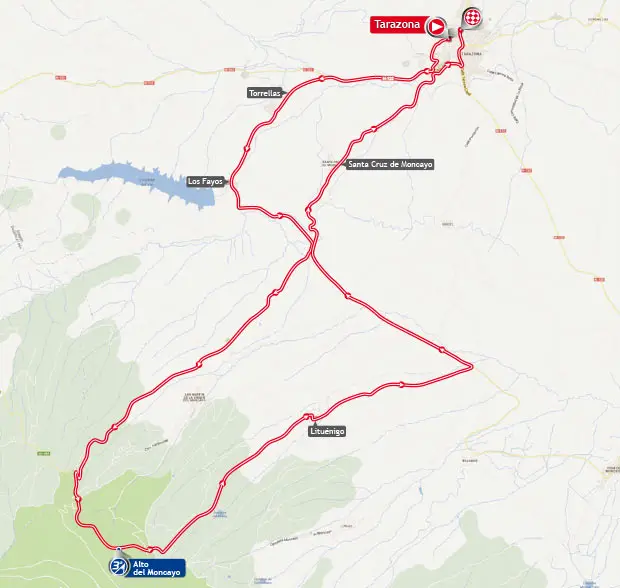Vuelta a España 2013 stage 11 is an individual time trial stage in Tarazona. The 38.8 km course contains a 3rd category climb. After the rest day, it will be a real test for the GC contenders.

Previous Stage: Vuelta a España 2013 Stage 10 details

Next Stage: Vuelta a España 2013 Stage 12 details
Vuelta a España 2013 stage 11 quick info
- DATE: September 04, Wednesday
- STAGE TYPE: Individual Time Trial (ITT)
- START-FINISH: Tarazona (485 m) > Tarazona (490 m)
- STAGE DISTANCE: 38.8 km
Vuelta a España 2013 stage 11 Profile

Last kilometers

Stage Map

Start-Finish: Tarazona

Tarazona is a municipality (pop. 10,667) in the Spanish province of Zaragoza, in the autonomous community of Aragon. It is the seat of the Roman Catholic Diocese of Tarazona and the capital of the Tarazona y el Moncayo Aragonese comarca.
During the Roman era, Tarazona was a prosperous city whose inhabitants were full Roman citizens; it was known as Turiaso. The city declined after the fall of the Roman Empire, and later became a Muslim town in the 8th century.
It was reconquered in 1119 by Alfonso I of Aragon and became the seat of the diocese of Tarazona. Construction on Tarazona Cathedral first began in the 12th century in the French Gothic style, and it was consecrated in 1232.
After the crucifixion of Alfonso I, Tarazona became a town situated on the frontiers between Castile, Navarre, and Aragon, and was thus of strategic importance.
During centuries of Arabic rule, the city’s population was diverse, and Christians, Jews, and Muslims lived together. The Muslim presence was evident in the local architecture; the cathedral itself was later rebuilt in Mudéjar style. The city suffered a terrible crisis when the Moriscos were expelled.
During the War of the Two Peters, the city was occupied by Castilian troops for nine years, and the cathedral was damaged during this time.
In the 20th century, Tarazona became an important producer of matches and textiles, but these industries were replaced by others from the 1980s onwards.
The city is now an important tourist destination with various restaurants and hotels.
Sources
- La Vuelta official website
- Tarazona on Wikipedia
- Top 18 fastest Paris-Roubaix editions - April 7, 2024
- Col de Tourmalet [Amazing photo from the 1953 Tour de France] - January 11, 2024
- Bernard Hinault and Francesco Moser, 1981 Paris-Roubaix - December 8, 2023
